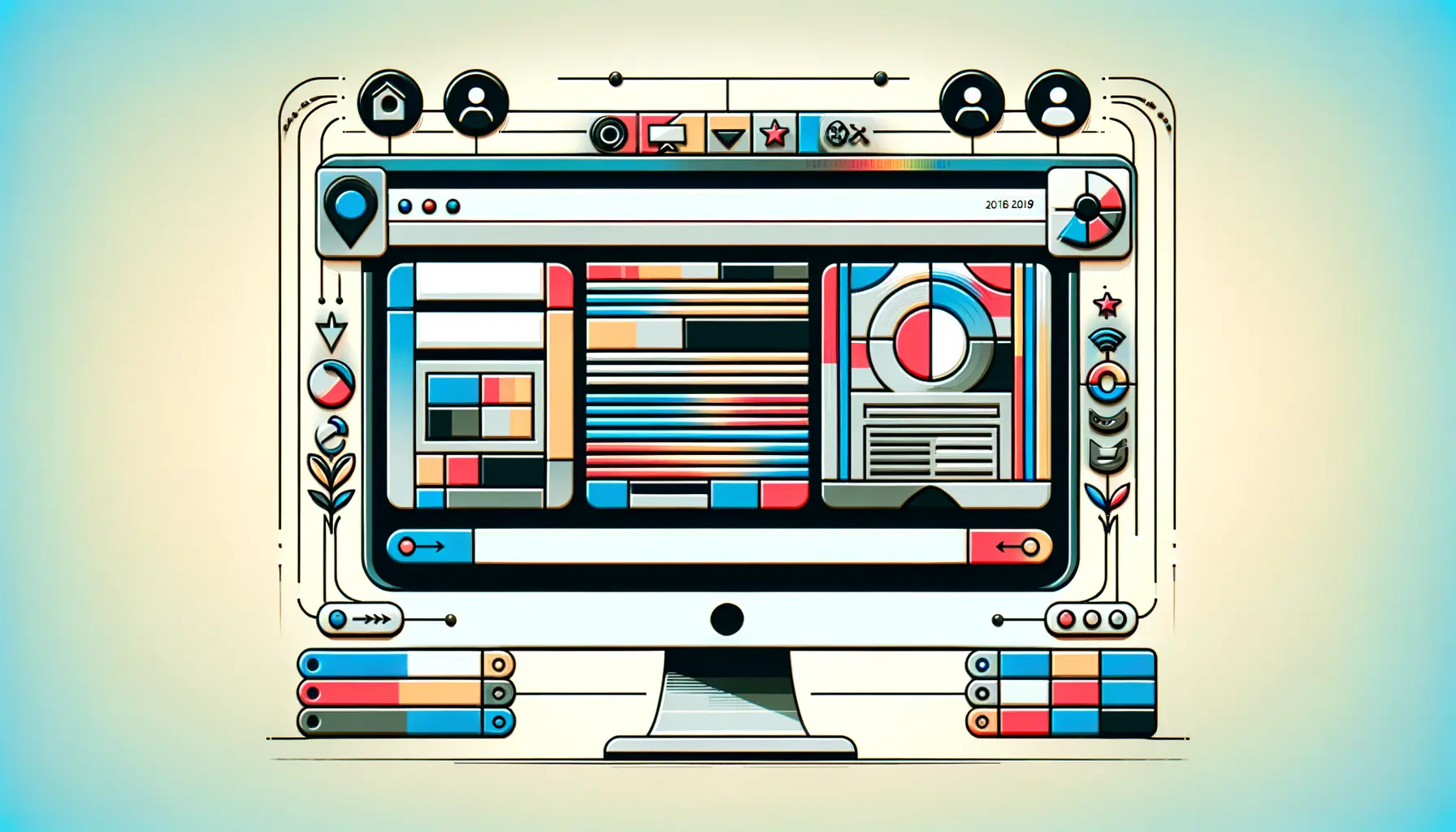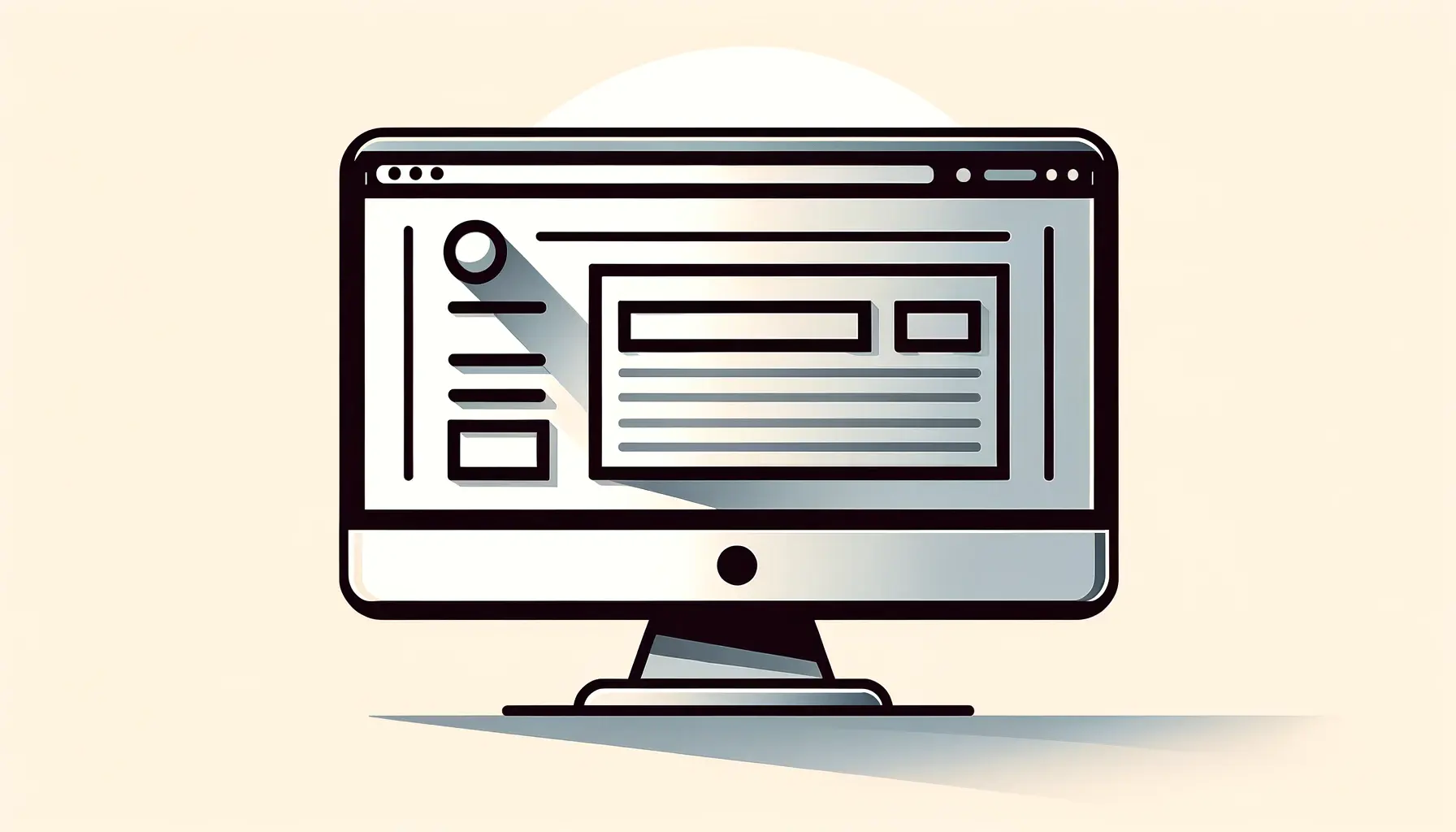Creating accessible websites is not just a matter of compliance or ethics; it’s a testament to the inclusive nature of the digital world.
Cascading Style Sheets (CSS) play a pivotal role in this inclusivity, offering a multitude of ways to design websites that are not only visually appealing but also accessible to all users, including those with disabilities.
The power of CSS in enhancing website accessibility cannot be overstated, as it provides the tools necessary to create web experiences that are usable by everyone, regardless of their physical or cognitive abilities.
Accessibility in web design ensures that all users, including those with disabilities, can access, understand, and navigate web content effectively.
CSS, as a cornerstone technology of the web alongside HTML and JavaScript, offers a unique advantage in this endeavor.
By separating content from presentation, CSS enables web developers to control the visual aspects of a website while keeping the content accessible.
This separation is crucial for implementing accessibility features that make the web more inclusive.
- Understanding CSS and Accessibility
- Implementing Keyboard Navigation
- Optimizing for Screen Readers
- Color Contrast and Visibility
- Responsive Design and Media Queries
- Utilizing CSS Frameworks and Preprocessors
- Accessibility Testing and CSS
- Empowering Web Accessibility with CSS
- CSS for Accessible Websites: FAQs
Understanding CSS and Accessibility
CSS is a stylesheet language used to describe the presentation of a document written in HTML or XML.
It defines how elements should be displayed on screen, on paper, or in other media.
For accessibility, CSS is instrumental in modifying the visual presentation of web pages to meet various user needs.
This includes adjusting colors, font sizes, and layout to improve readability and navigability for users with visual impairments, without altering the semantic structure of the content.
One of the key benefits of using CSS for accessibility is its ability to create flexible and responsive designs.
Responsive web design is not just about making a website look good on any device but also about ensuring it can be used by everyone.
CSS facilitates this by allowing web pages to adapt to the needs of users, such as by reflowing content to fit different screen sizes, enhancing keyboard navigation, and ensuring that interactive elements are easily accessible.
Enhancing Visual Accessibility with CSS
Visual accessibility can be significantly enhanced through careful use of CSS.
By employing high-contrast color schemes and scalable font sizes, developers can make web content more readable for users with visual impairments.
CSS allows for the customization of visual elements to comply with the Web Content Accessibility Guidelines (WCAG), which set the standard for web accessibility.
For instance, CSS can be used to ensure sufficient contrast between text and its background, which is crucial for users with low vision.
Moreover, CSS enables the creation of text alternatives for non-text content, such as images, through the use of attributes like ‘aria-label’ and ‘alt’.
These alternatives are essential for screen reader users, allowing them to understand the content that they cannot see.
Additionally, CSS can control the display of these alternatives, ensuring they are presented in a way that is helpful to the user without disrupting the overall design of the page.
CSS’s flexibility and control over presentation make it an invaluable tool in the creation of accessible websites, proving that good design and accessibility can go hand in hand.
Implementing Keyboard Navigation
Keyboard navigation is a critical aspect of web accessibility, allowing users who cannot use a mouse to navigate through web pages using keyboard shortcuts.
CSS plays a significant role in enhancing keyboard navigation by providing visual cues and ensuring that interactive elements are easily navigable.
Implementing effective keyboard navigation involves several CSS strategies that contribute to an accessible web environment.
One of the primary CSS techniques for improving keyboard navigation is the customization of focus styles.
When a user navigates through a website using the tab key, the focus style indicates which element is currently selectable.
Custom focus styles created with CSS can make these elements stand out, aiding users in understanding where they are on the page.
Customizing Focus Styles
- Use the
:focuspseudo-class to apply custom styles to elements when they receive focus. This can include changes in border, background color, or adding an outline to ensure high visibility. - Ensure that focus styles are not removed. Using
outline:nonewithout providing an alternative visual cue can make it difficult for users to navigate your site.
Ordering Interactive Elements
Another key consideration in CSS for keyboard navigation is the logical ordering of interactive elements.
CSS can visually position elements in a way that looks appealing, but it’s important to ensure that the tab order follows a logical sequence that aligns with the visual layout.
This logical flow can be achieved by structuring the HTML document correctly and then using CSS to style it, rather than using CSS to move elements around the page.
- Interactive elements such as links, buttons, and form inputs should be ordered in a way that reflects their importance and relationship on the page.
- Avoid using CSS to visually reposition these elements in a way that conflicts with their order in the HTML document. This can confuse keyboard users when the visual order does not match the tab order.
Enhancing Menu Accessibility
Menus are often the primary means of navigation on a website, and enhancing their accessibility through CSS is crucial for users relying on keyboard navigation.
CSS can be used to ensure that dropdown menus are accessible through keyboard alone, providing visual indicators and interactive feedback as users navigate through menu items.
- Use CSS to visually highlight menu items as they receive focus, making it clear which menu item is currently selected.
- Ensure that dropdown menus can be accessed and navigated using the arrow keys, providing a seamless experience for keyboard users.
By focusing on these CSS strategies, developers can significantly improve the keyboard navigation of their websites, making them more accessible to users who rely on keyboard shortcuts to browse the web.
Optimizing for Screen Readers
Screen readers are essential tools that allow users with visual impairments to access and interact with web content.
CSS plays a pivotal role in optimizing websites for screen reader compatibility, ensuring that content is presented in a logical and meaningful order.
By leveraging CSS, developers can enhance the screen reader experience, making web content more accessible and navigable.
One of the fundamental ways CSS impacts screen reader users is through the control of content visibility.
CSS provides mechanisms to visually hide content that should remain accessible to screen readers, such as descriptive labels for interactive elements or additional context for links and buttons.
This technique ensures that users who rely on screen readers can still access important information that enhances their understanding of the page, without cluttering the visual layout.
Visually Hidden Content
- Use CSS to visually hide elements while keeping them readable by screen readers. Techniques such as setting
position:absoluteand moving the element off-screen ensure that the content is not visible on the page but remains accessible to screen reader technology. - Avoid using
display:noneorvisibility: hiddenfor content you want to be accessible to screen readers, as these properties hide content from both visual users and assistive technologies.
Structural Semantics
Structural semantics are crucial for screen readers to interpret and navigate web content effectively.
CSS can style semantically meaningful HTML elements—such as headings, lists, and links—without altering their inherent meaning.
This approach allows screen readers to convey the structure and hierarchy of the content, enabling users to navigate and understand the layout of the page more intuitively.
- Use semantic HTML elements and style them with CSS rather than creating structure with CSS alone. For example, style
<h1>to<h6>elements for headings instead of using<div>or<span>with custom styles. - Ensure that CSS styles do not interfere with the semantic meaning of the content. For instance, visually styled buttons should use the
<button>element rather than styling links (<a>) to look like buttons.
ARIA Roles and Properties
Accessible Rich Internet Applications (ARIA) roles and properties offer additional ways to enhance accessibility for screen reader users.
While ARIA is primarily implemented through HTML, CSS can influence how these ARIA roles are presented.
For example, CSS can style elements based on their ARIA roles, improving the visual feedback for interactive elements like tabs or accordions.
- Use CSS to provide visual cues for elements with specific ARIA roles, such as
aria-expandedto indicate collapsible content areas. - Ensure that styling based on ARIA roles does not contradict the element’s function or mislead the user about its interactive capabilities.
While CSS is a powerful tool for enhancing the visual presentation of a website, its use must be carefully balanced with the need to maintain semantic integrity and accessibility for screen reader users.
Color Contrast and Visibility
Ensuring sufficient color contrast and visibility on a website is crucial for users with visual impairments, such as color blindness or low vision.
CSS provides a robust framework for developers to specify color schemes that adhere to accessibility standards, thereby enhancing the readability and usability of web content.
By focusing on color contrast and visibility, developers can create an inclusive web environment that accommodates the needs of a diverse audience.
Color contrast refers to the difference in light between font (or foreground) and its background, making text or images distinguishable and readable.
The Web Content Accessibility Guidelines (WCAG) recommend specific contrast ratios for normal and large text to ensure that content is accessible to users with visual impairments.
CSS allows developers to implement these recommendations through careful selection of color combinations for text, backgrounds, buttons, and other elements.
Implementing High Contrast Colors
- Utilize CSS to define high contrast color schemes that comply with WCAG guidelines. For example, ensuring that text color and background color have a contrast ratio of at least 4.5:1 for normal text and 3:1 for large text.
- Employ CSS tools and functions like
calc()to dynamically adjust colors and maintain contrast ratios, especially in responsive designs or themes where background and text colors may vary.
Adapting for Different Visual Impairments
Visual impairments vary widely among users, including color blindness, low vision, and total blindness.
CSS can be used to create stylesheets that cater to different types of visual impairments, offering alternative color schemes or styles that users can select based on their preferences or needs.
This adaptability enhances the accessibility and user experience of a website.
- Provide alternative stylesheets with CSS that offer different color schemes, such as high contrast or monochrome, to accommodate users with various types of color blindness.
- Use CSS media queries to detect user preferences set in their operating system or browser, such as dark mode, and apply styles that respect these preferences.
Ensuring Readability with Text and Background
The readability of text on a website is heavily influenced by the color contrast between the text and its background.
CSS techniques can enhance readability by ensuring that text is easily distinguishable from its background, using appropriate font sizes, weights, and line spacing.
Additionally, CSS can be used to provide visual cues for links and interactive elements, further improving the navigability of a website.
- Apply CSS properties like
font-weight,line-height, andfont-sizeto improve text readability, especially for users with low vision. - Use CSS to differentiate links from regular text through color contrast, underlining, or other visual indicators, ensuring that users can easily identify clickable elements.
Proper use of CSS to enhance color contrast and visibility not only complies with accessibility standards but also improves the overall user experience, making web content more accessible and enjoyable for all users.
Responsive Design and Media Queries
Responsive web design is essential for creating accessible websites that provide an optimal viewing experience across a wide range of devices, from desktop computers to mobile phones.
CSS plays a crucial role in implementing responsive design through the use of media queries.
Media queries allow developers to apply different styles based on the characteristics of the device or viewport, ensuring that content is accessible and legible on any screen size.
By employing responsive design techniques, developers can ensure that their websites are flexible and adaptive, providing a seamless user experience regardless of the device used.
This approach is particularly important for users with disabilities who may rely on mobile devices or require specific screen configurations to access web content effectively.
Adapting Layouts with CSS Media Queries
- Use CSS media queries to create fluid layouts that adjust to the width of the viewport, ensuring that content is easily readable and navigable on any device.
- Implement breakpoints in CSS to change the layout of a page at specific widths, optimizing the presentation of content for different screen sizes.
Enhancing Usability on Mobile Devices
Mobile devices present unique challenges and opportunities for web accessibility.
CSS media queries enable developers to enhance usability on mobile devices by adjusting the size of touch targets, spacing, and the layout of interactive elements.
This ensures that users with motor impairments or those using assistive technologies can interact with mobile websites more easily.
- Increase the size of buttons and links for touch screens to ensure that they are easy to tap, applying minimum size guidelines for touch targets.
- Adjust padding and spacing between interactive elements to prevent accidental taps and make navigation easier for users with motor impairments.
Optimizing Text for Readability
Text readability is a critical aspect of web accessibility, especially on mobile devices where screen real estate is limited.
CSS allows developers to optimize text for readability by adjusting font sizes, line heights, and contrast based on the device’s characteristics.
This ensures that text is legible and easy to read, enhancing the overall user experience.
- Use relative units like ems or percentages in CSS to make font sizes flexible, allowing text to scale according to the device’s screen size and user preferences.
- Employ CSS media queries to adjust text properties such as line height and letter spacing in response to device orientation (portrait or landscape) and viewport width.
Responsive design, facilitated by CSS media queries, is a cornerstone of accessible web development, ensuring that websites are usable and enjoyable for everyone, regardless of the device they use to access the internet.
Utilizing CSS Frameworks and Preprocessors
CSS frameworks and preprocessors are powerful tools that can significantly streamline the development of accessible websites.
These tools provide a structured approach to CSS, offering reusable components, mixins, and variables that can enhance both the efficiency of development and the accessibility of the final product.
By leveraging these resources, developers can ensure consistency across their projects and adhere to accessibility standards more easily.
Frameworks like Bootstrap and Foundation include built-in accessibility features, such as semantic HTML templates and ARIA roles, that can serve as a solid foundation for building accessible web applications.
Meanwhile, preprocessors like Sass and LESS allow developers to write more maintainable and modular CSS code, which can be automatically compiled into standard CSS.
This modular approach not only speeds up the development process but also ensures that accessibility considerations are integrated into the design from the ground up.
Benefits of CSS Frameworks
- Frameworks provide pre-designed components that follow accessibility guidelines, reducing the time and effort required to implement accessible design elements.
- They encourage the use of consistent styling and behavior across a website or application, which is crucial for users who rely on predictable patterns to navigate.
Advantages of CSS Preprocessors
- Preprocessors introduce variables, mixins, and nesting capabilities, allowing developers to create complex, reusable styles that are easier to read and maintain.
- They can automate the generation of high-contrast color themes or responsive design elements, ensuring that accessibility features are consistently applied across a project.
Implementing Accessible Design with CSS Tools
While CSS frameworks and preprocessors offer significant advantages, it’s important for developers to use these tools judiciously.
Customizing framework components to meet specific accessibility needs or ensuring that the compiled CSS code is optimized for performance are critical steps in leveraging these tools effectively.
Developers should also stay updated on the accessibility features and best practices associated with their chosen frameworks and preprocessors to maximize the accessibility of their web content.
- Customize framework components to include additional accessibility features, such as keyboard navigation cues or alternative text for images.
- Use preprocessors to create themeable designs that can be easily adjusted to meet various accessibility standards, such as WCAG contrast ratios.
By integrating CSS frameworks and preprocessors into their workflow, developers can enhance the accessibility of their web projects, making the web more inclusive for all users.
Accessibility Testing and CSS
Ensuring that a website is accessible requires thorough testing, and CSS plays a significant role in this process.
Accessibility testing involves evaluating how well your web content can be accessed by people with disabilities, including visual, auditory, physical, speech, cognitive, and neurological disabilities.
CSS affects the visual presentation and layout of a website, which can significantly impact its accessibility.
Therefore, incorporating accessibility testing into the CSS development process is crucial for creating websites that are truly inclusive.
There are several tools and techniques available for testing the accessibility of a website’s CSS.
Automated testing tools can scan web pages for common accessibility issues, such as insufficient color contrast, missing text alternatives, or incorrect use of ARIA roles.
However, automated tools alone are not enough to ensure full accessibility compliance.
Manual testing, including keyboard navigation tests and screen reader evaluations, is essential to identify and resolve issues that automated tools might miss.
Automated Accessibility Testing Tools
- Use tools like Axe, WAVE, or Lighthouse to perform automated accessibility checks on your web pages. These tools can identify CSS-related issues, such as color contrast problems or dynamic content visibility issues.
- Incorporate these tools into your development workflow to regularly test and address accessibility issues during the development process.
Manual Testing and User Feedback
- Conduct manual testing by navigating your website using only a keyboard or a screen reader to understand the user experience for people with disabilities.
- Seek feedback from users with disabilities to gain insights into how your website’s CSS affects their ability to access and interact with your content.
Continuous Learning and Improvement
Accessibility is an ongoing commitment, and web standards and technologies are constantly evolving.
Staying informed about the latest accessibility guidelines and CSS techniques is essential for maintaining an accessible web presence.
Developers should engage with the accessibility community, participate in training and workshops, and continuously seek to improve their skills and knowledge in web accessibility.
- Follow accessibility blogs, forums, and social media groups to stay updated on the latest trends and discussions in web accessibility.
- Participate in accessibility training sessions and workshops to deepen your understanding of how to create accessible web experiences using CSS and other web technologies.
Relying solely on automated tools for accessibility testing is a common mistake. Combining automated testing with manual evaluations and user feedback is essential for achieving comprehensive accessibility compliance.
Empowering Web Accessibility with CSS
The journey through the nuances of using CSS to enhance web accessibility underscores the profound impact that thoughtful, inclusive design can have on users across the spectrum of abilities.
The power of CSS in creating accessible websites is not merely about adhering to standards or avoiding legal pitfalls; it’s about embracing the ethos of the web as a universally accessible resource.
By leveraging CSS’s capabilities, developers can craft experiences that are not only compliant with accessibility guidelines but are also enjoyable and usable for everyone.
Key Takeaways for Enhancing Accessibility
Throughout this exploration, several key themes have emerged, each highlighting a different aspect of how CSS contributes to accessible web design:
- Understanding CSS and Accessibility: The foundational role of CSS in separating content from presentation and its implications for accessibility.
- Implementing Keyboard Navigation: The importance of CSS in enhancing keyboard navigability, ensuring that all users can efficiently interact with web content.
- Optimizing for Screen Readers: How CSS can be used to make web content more comprehensible and navigable for screen reader users.
- Color Contrast and Visibility: The critical role of CSS in ensuring sufficient color contrast and visibility for users with visual impairments.
- Responsive Design and Media Queries: The necessity of responsive CSS techniques for creating flexible web layouts that adapt to various devices and screen sizes.
- Utilizing CSS Frameworks and Preprocessors: The benefits of employing CSS frameworks and preprocessors to streamline the development of accessible websites.
- Accessibility Testing and CSS: The importance of both automated and manual testing in identifying and resolving accessibility issues related to CSS.
Forging Ahead: A Call to Action for Developers
The exploration of CSS’s role in web accessibility is more than a technical guide; it’s a call to action for developers, designers, and content creators to prioritize accessibility in their digital projects.
As the web continues to evolve, the commitment to accessibility must remain steadfast, with CSS serving as a key tool in the developer’s arsenal for creating inclusive web experiences.
By embracing the principles outlined in this article, professionals can contribute to a more accessible digital world, one website at a time.
In conclusion, the power of CSS in creating accessible websites is undeniable.
It offers a pathway to not only meet legal and ethical standards but to also provide a richer, more inclusive web experience for all users.
As developers and designers continue to push the boundaries of what’s possible with CSS, the potential to innovate in the realm of accessibility is boundless.
Let’s continue to learn, adapt, and apply these principles, ensuring that the web remains a space for everyone, regardless of ability.
Quality web design is key for a great website! Check out our service page to partner with an expert web design agency.
CSS for Accessible Websites: FAQs
Explore common questions about leveraging CSS to enhance website accessibility, ensuring a seamless experience for all users.
CSS separates content from presentation, allowing developers to control visual aspects while maintaining content accessibility.
By customizing focus styles, CSS enhances the visibility and usability of web elements for keyboard-only users.
Yes, CSS can be used to visually hide content that remains accessible to screen readers, improving usability.
Ensuring text and background colors meet WCAG contrast ratio guidelines is a key CSS practice for accessibility.
Media queries in CSS enable responsive design, ensuring content is accessible and legible on any device.
Frameworks offer built-in accessibility features, streamlining the development of compliant and user-friendly websites.
Essential for identifying and fixing CSS-related accessibility issues, ensuring content is accessible to all users.
No, while CSS significantly enhances accessibility, it should be used in conjunction with semantic HTML and ARIA roles.










